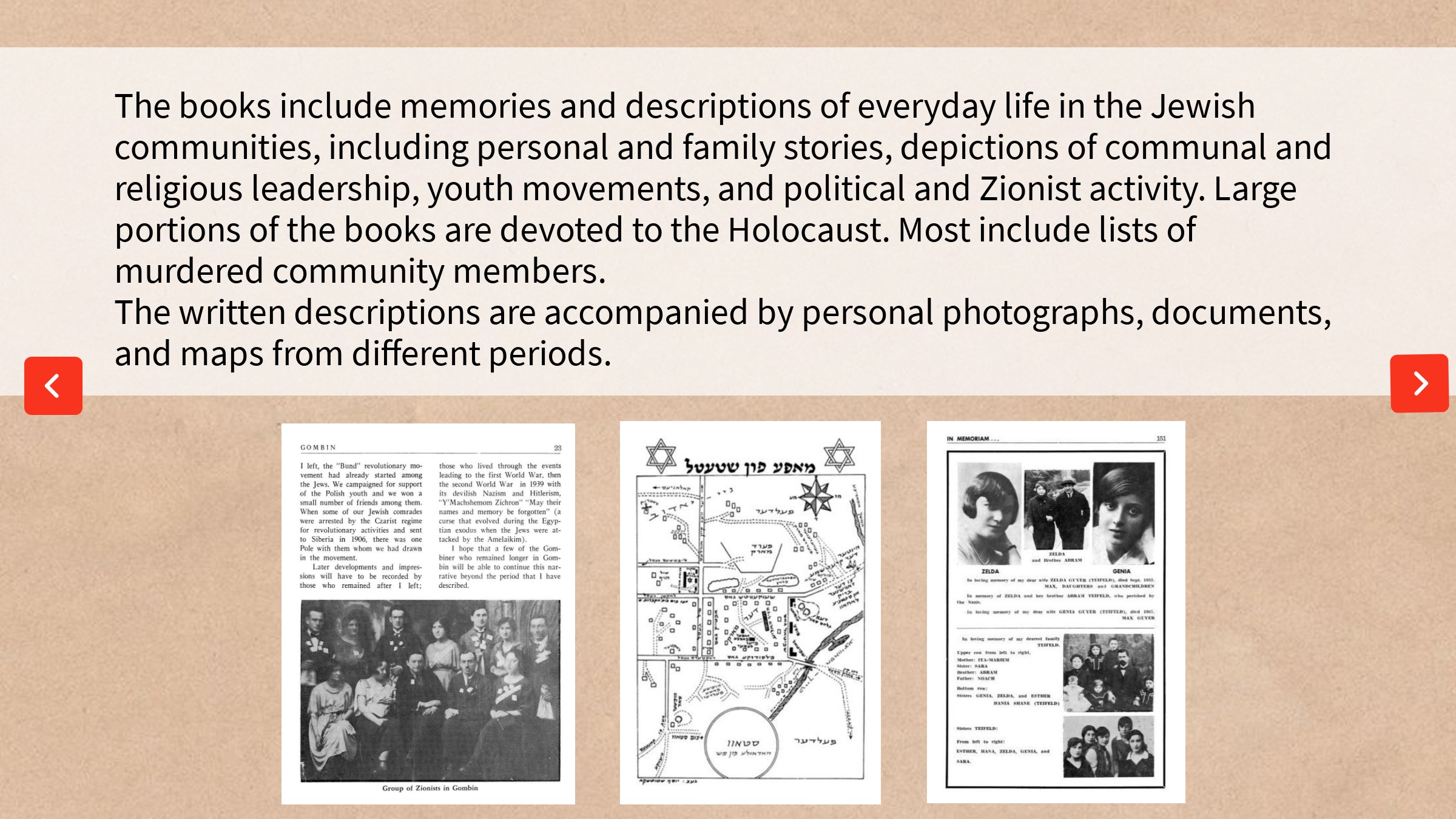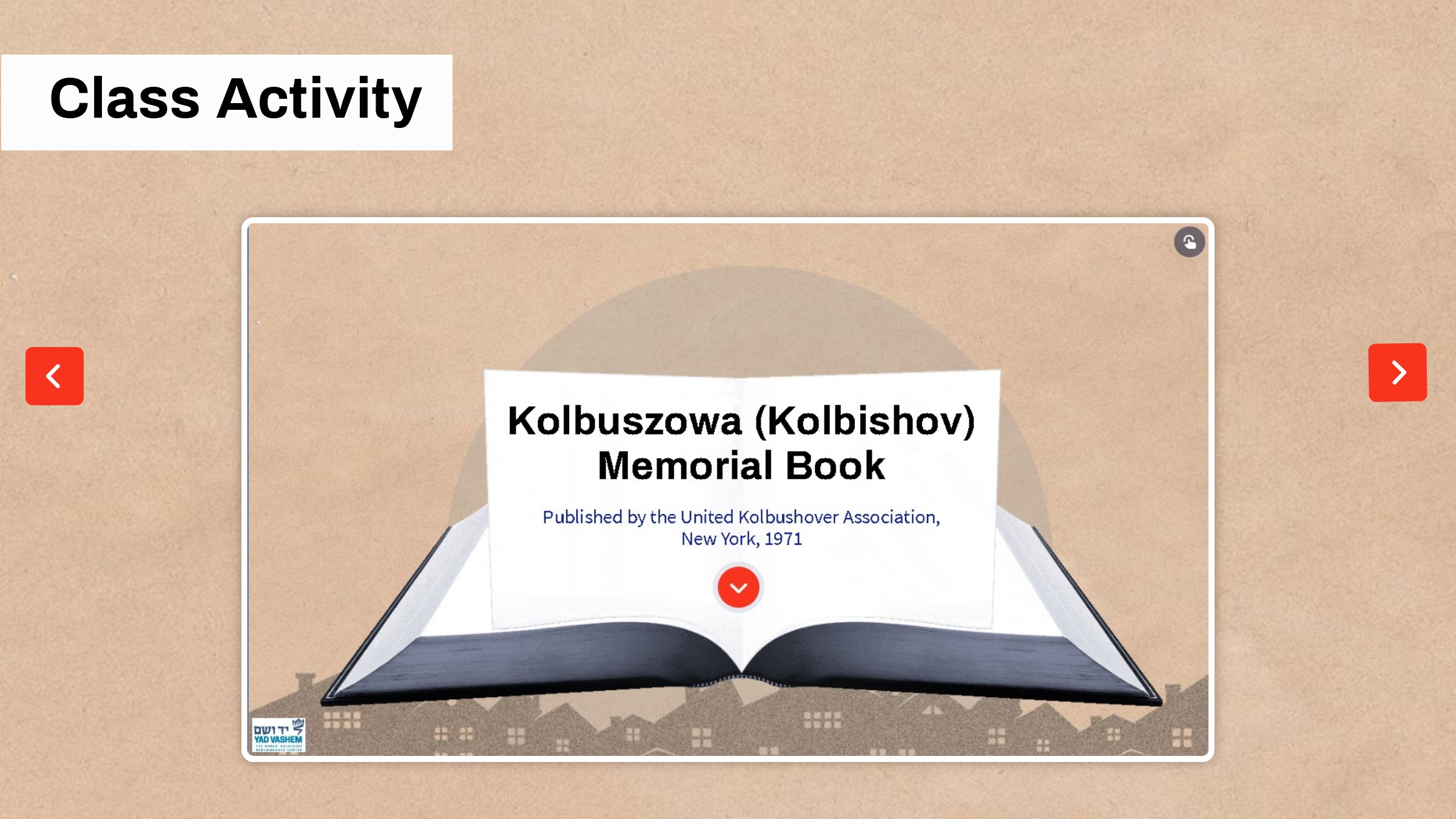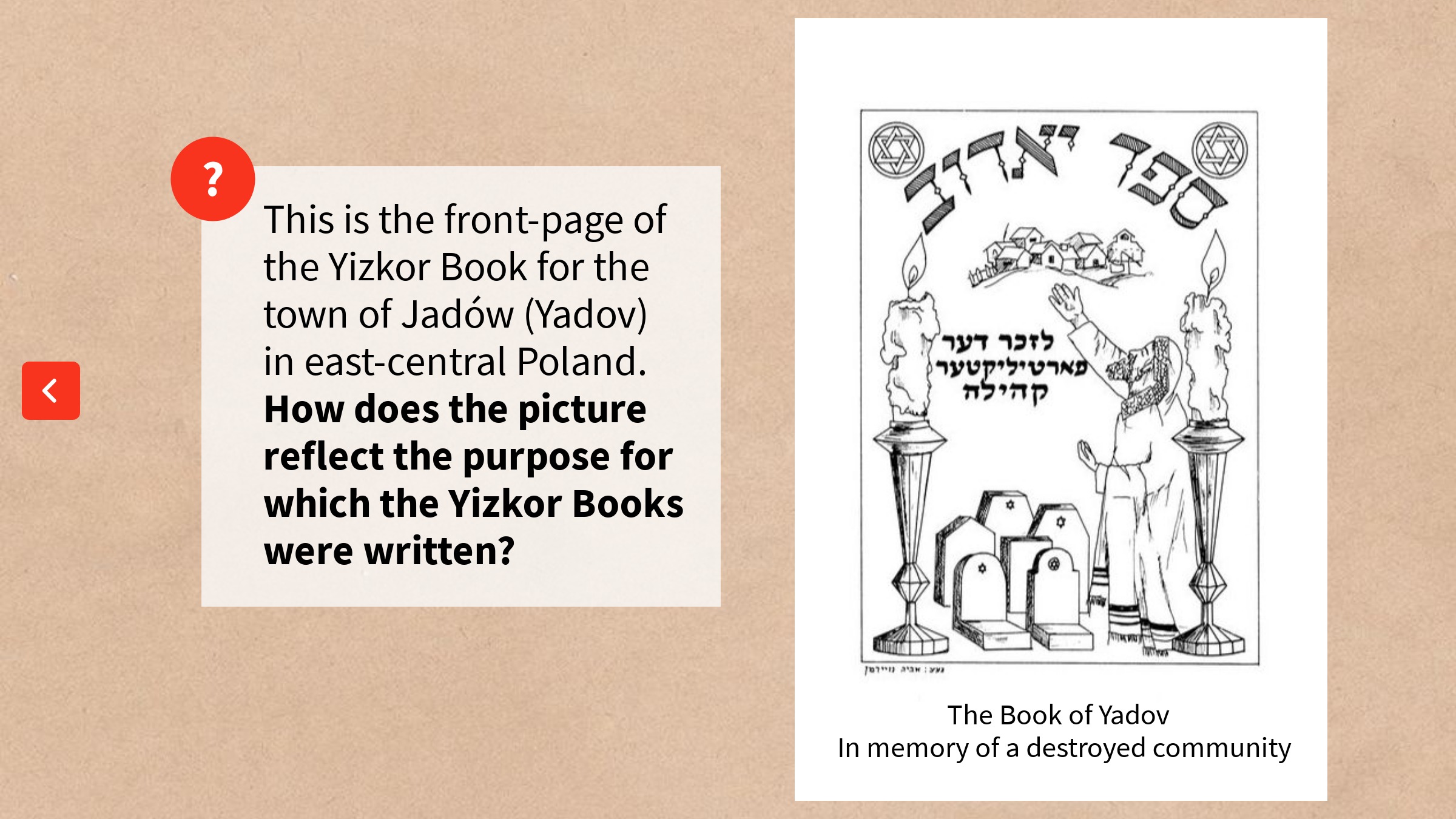The following lesson deals with the Yizkor Books (Yizker Bikher in Yiddish or Yizker Bukh in the singular) of shtetls in Eastern Europe. The lesson is meant to convey to the students the purpose for which these books were written, and to afford them insight into the daily life and culture of these small Jewish towns. The lesson material is suitable both for online learning via Zoom, and for in-class teaching.
Target Audience: High school students.
What are Yizkor Books?
Yizkor Books were written in order to document and preserve the memory of primarily Eastern European Jewish communities that were destroyed in the Holocaust.
Most often, these books were written and published by the Landsmanshaftn, organizations founded by immigrants from a common community, and named after the members' place of birth or former residence. These organizations initiated various activities to help their members and to preserve the memory of their place of origin following the Holocaust.
Holocaust survivors and immigrants from these former communities were asked to send written texts describing their town and its Jewish life. These texts were collected and published as the Yizkor Books.
Most Yizkor Books were written in Yiddish and Hebrew, often including a short English section, but some were written in other languages as well. Some books are devoted exclusively to a single community, while others are devoted to a number of neighboring communities or a whole region. In total, hundreds of Yizkor Books were published, most of them between the 1950s and the 1970s.
Although each Yizkor Book is unique, there are nonetheless certain typical characteristics that tend to appear. The books often cover three different periods, and are constructed chronologically: the period before the First World War; the interwar years; and the Holocaust.
The books include memories and descriptions of everyday life in the Jewish communities, including personal and family stories, depictions of communal and religious leadership, youth movements, and political and Zionist activity. Large portions of the books are devoted to the Holocaust. Most include lists of murdered community members. The written descriptions are accompanied by personal photographs, documents, and maps from different periods.
Lesson Guide
Introduction:
Refer to the corresponding presentation.
- Discuss with the students the meaning of the word "Yizkor" in Hebrew and in Jewish tradition:
The word Yizkor means "to remember" in Hebrew. In Jewish tradition it is the name given to the traditional mourning and remembrance prayer, in which the names of the deceased are recited. - Discuss with the students what and why people choose to memorialize.
- Explain and present to the students what Yizkor Books are.
Note to the teacher: It is important to emphasize here that the contributors to the Yizkor Books were sharing their personal experiences and memories. One person’s memory cannot represent the memories of others, or purport to give a full depiction of life in a given community. On the other hand, personal memories are important resources for portraying everyday life, and may present us with material that is not included in other historical sources. This subject can be discussed with the students.
Class Activity: The Yizkor Book of Kolbuszowa (Kolbushov)
In the following activity we will read a passage from the Yizkor Book of Kolbuszowa (pronounced "Kolbushova" or "Kolbishov" in Yiddish), describing the vibrant market day in the town.
Note to the teacher: Explain to the students that the shtetl had many facets and aspects and that these are represented in the Yizkor Books. However this activity focuses on the market place, which was the central economic lifeline for these towns and a place of interaction among the Jews themselves and between the Jewish and non-Jewish population.
Students will receive a link to the activity containing historical information on the town, a link to its location on a current day map, a passage from the Yizkor Book of Kolbuszowa and a number of questions on it. This activity can be undertaken with the teacher or in small groups, in which students will read and discuss the passage independently.
The link to the activity can be found here, as well as in the accompanying presentation:
The Kolbuszowa Yizkor Book
Guiding questions to be discussed collectively after completing the activity:
1. Discuss the passage and what you learned about the town.
2. In your opinion, why did the writer choose to publish this text? Who was the intended audience? (This questions was addressed by the students in the activity).
The teacher explains that Yizkor Books were written in order to commemorate the murdered Jewish communities. For those individuals who perished without a proper burial, these books stand in as a gravestone, as well as a memorial to the Jewish towns that were wiped out.
Refer to the corresponding presentation
On the slide is a quote from the Yizkor Book of the town of Goniądz (pronounced Goniondz) in northeast Poland. Read this passage with the students and discuss what it can teach us about the motivations of those sharing their memories in the Yizkor Books.
Lesson summary:
On the final slide is a front-page from the Yizkor Book of the town of Jadow (pronounced Yadov) in east-central Poland. Ask the students to explain how the image reflects the reason the books were written.
A large collection of Yizkor Books is available to the public in the library reading room at Yad Vashem. In addition, hundreds of Yizkor Books have been digitized and are available at the following sites:
The New York Public Library
The Yiddish Book Center
These books can be downloaded in PDF form.
Note to the teacher: Though Yizkor Books were written about different types of settlements (cities, regions, countries etc.), the focus of this lesson is on those dedicated to shtetls.










